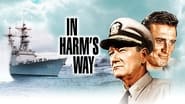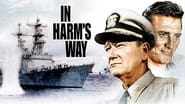Solemplex
To me, this movie is perfection.
Senteur
As somebody who had not heard any of this before, it became a curious phenomenon to sit and watch a film and slowly have the realities begin to click into place.
Arianna Moses
Let me be very fair here, this is not the best movie in my opinion. But, this movie is fun, it has purpose and is very enjoyable to watch.
SanteeFats
This is a great World War II movie. Historically it is fairly accurate, which a lot are not. John Wayne is at his best here. Burgess Meredith does his usual excellent acting job in a supporting role. Robert Mitchum has a role as the rapist of the girlfriend of Wayne's son and then to make amends (not that you can) goes on a suicide recon run to get info is done as well as you would expect. When Wayne finally gets promoted and put in charge of an operation, he understands the political back stabbing by the sector admiral whom he by passes in the information loop. This political officer is just out for the headlines and shows up to try and steal the spotlight, with his mealy mouthed politician of an aide it is very satisfying when he ends up putting his foot in his mouth and gets embarrassed in front of the entire press corps. When Wayne sends his own son out with the PT boats on a necessary but basically fruitless attack to delay the Jap ships it shows his character's iron resolve to get the job done no matter what the cost since his only son does not come back. This is a really good movie on several planes.
williwaw
It is difficult to imagine two more different Men then John Wayne, the ultimate male American movie star and Otto Preminger who loved to stir the pot of controversy with his films tackling subjects such as drug addiction in The Man With A Golden Arm ( with a splendid Kim Novak), or the Catholic Church in The Cardinal starring Tom Tryon, or Politics in Advise and Consent. Preminger was known as a screamer who yelled at people a lot but never his A List movie stars all of whom liked working with him. In particular Kim Novak, Paul Newman, Frank Sinatra, and Duke Wayne, Kirk Douglas. (Preminger must have had a soft spot because he regularly cast Burgess Meredith and others such as Dana Andrews who was at one time a big star but who suffered from bouts of alcoholism and returned the beautiful Gene Tierney to the screen after her bouts with depression in Advise and Conset)First billed John Wayne and Director Otto Preminger together these two Men created a rousing WW2 Film.Preminger cast John Wayne, Kirk Douglas, Paula Prentiss, Patricia Neal, and a supporting cast of Preminger contractees such as Tom Tryon, and Jill Haworth and Brandon DeWilde. The scenes between Duke Wayne and Ms Neal are affecting. The entire cast does superior work.I recommend this film
lani4-886-903615
I recently acquired the DVD of this movie in a three DVD set that included Donovan's Reef and Hatari.On the whole I've found that In Harm's Way meets my criteria - I was entertained but I'm afraid that there were several things that stretched credibility beyond usual limits. First the Japanese planes shooting at two people on a beach before they attacked Pearl Harbour was a bit far-fetched and then the incredible flaming car with flames pouring out of the passenger area after the head-on collision with the truck was way over the top. And then later for Liz's purse and shoes to be in pristine condition after being in that blazing inferno and her being recognizable when Paul came to identify her pushed this whole 'bit' into being just plain silly.And later the very obvious use of model ships in some shots that were not quite big enough to pass for real ships somewhat spoiled the effectiveness of the images of the ships. Much later at almost the end of the movie when Admiral Torrey 'wakes up' on the hospital ship after almost 3 weeks the gauze 'hat' that the costume dept plunked on his head looked nothing like a professionally applied dressing and after almost 3 weeks any open wounds would have been well healed and not needing to be bandaged any longer. Also to have an unconscious patient in a closed room by himself, lying face up and with no IV or catheter was a glaring omission. Anyone 'asleep' aka unconscious for any length of time would, even in the 1940s, have had IV fluids 24/7 which would require a catheter 24/7 as well but what they did have beside his bed was a stainless steel pitcher and a drinking glass half full of what was probably water, not exactly what an unconscious patient needs. Until those scenes with Admiral Torrey on the hospital ship the medical scenes were actually quite well done but that silly looking gauze hat actually had me laughing. I guess it was easier to just plunk it on his head when they needed to do a retake but if you'll notice most of the time he looked like he was afraid to move his head because it would shift around because it was so loose.What held this movie together for me were the performances. As always I thoroughly enjoyed Patricia Neal's performance as well as the performances by Paula Prentiss, Tom Tryon, Kirk Douglas, Stanley Holloway, Burgess Meredith and of course 'The Duke'. Young Brandon De Wilde's transformation was interesting to watch as well as convincing and Patrick O'Neal's sleazy Commander Neal Owynn was very well done too.It is a different kind of war movie and well worth watching in spite of the above mentioned problems that I have with the film. I have watched it a few times and will again at some point because in spite of its sometimes silly shortcomings, because of the performances, I was entertained.
oldgringo2001
I actually read the novel, and the movie is much more faithful to it than most screen adoptions. I agree that the model work was quite poor, but extremely forgivable given the strong story-line and acting. It captures the feel of the naval war in the Pacific for the Americans quite well. Since quite a number of other reviewers have agreed with me, the rest of this review will concentrate on differences between the movie and what actually happened.Motor torpedo boats did sink a battleship once--in World War I. The PT boats of this war never sank anything larger than a destroyer, and few of those. Many had their torpedoes removed to fit small cannons, useful for sinking barges and floating drums. While new craft could reach 40 knots in calm water, engines tended to wear out quickly, and in combat conditions, the PT boats were generally slower than the ships they were trying to attack.There never was a daylight battle between any Japanese battleships and American cruisers. There were two night battles, one at Guadalcanal and one at Surigao Strait in the Philippines, and in the latter, the American cruisers were backed by six battleships, versus only two Japanese battleships and one cruiser.The mighty Yamato never fought anything more formidable than destroyers, and doesn't seem to have scored a single hit on an enemy vessel. Her sister Musashi never sighted an enemy vessel. Both were sunk by aircraft. Their poor performance might be explained by their spending most of the war at anchor. They were comfortable ships even for enlisted men, at least by the standards of the Japanese navy of the time. Yamato was often called "the Yamato Hotel" and the Musashi "the Palace."The U.S. Navy did very little mining during World War II. Laying mines to protect Guadalcanal would have been a wonderful idea, but then, as now, mines were unpopular weapons with the admirals. The final battle in the movie and the novel seems to be most similar to a night battle on November 13, 1942 between a US force of cruisers and destroyers and a Japanese task force built around two older battleships (each about half the size of Yamato). The US force suffered heavy casualties and two US Admirals were killed, but it crippled one of the battleships, leaving it vulnerable to US bombers the next day.






